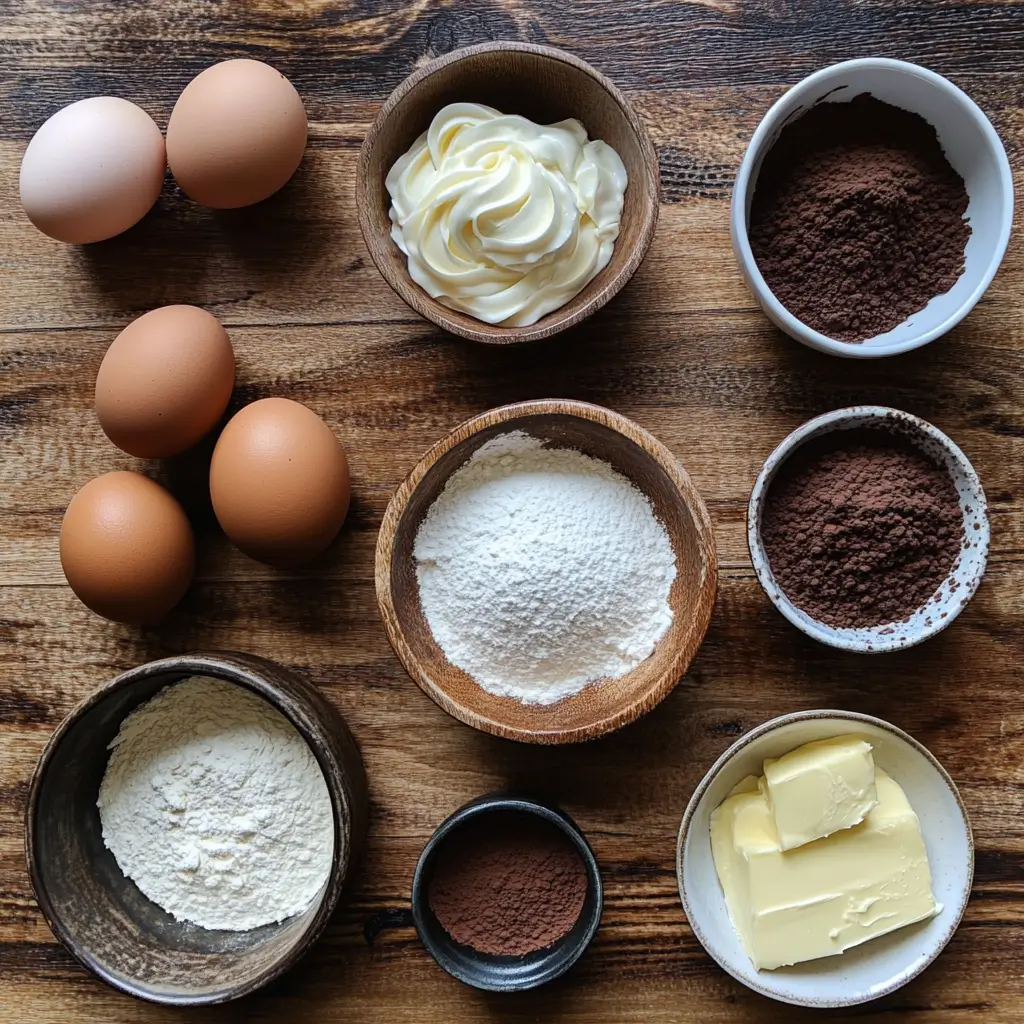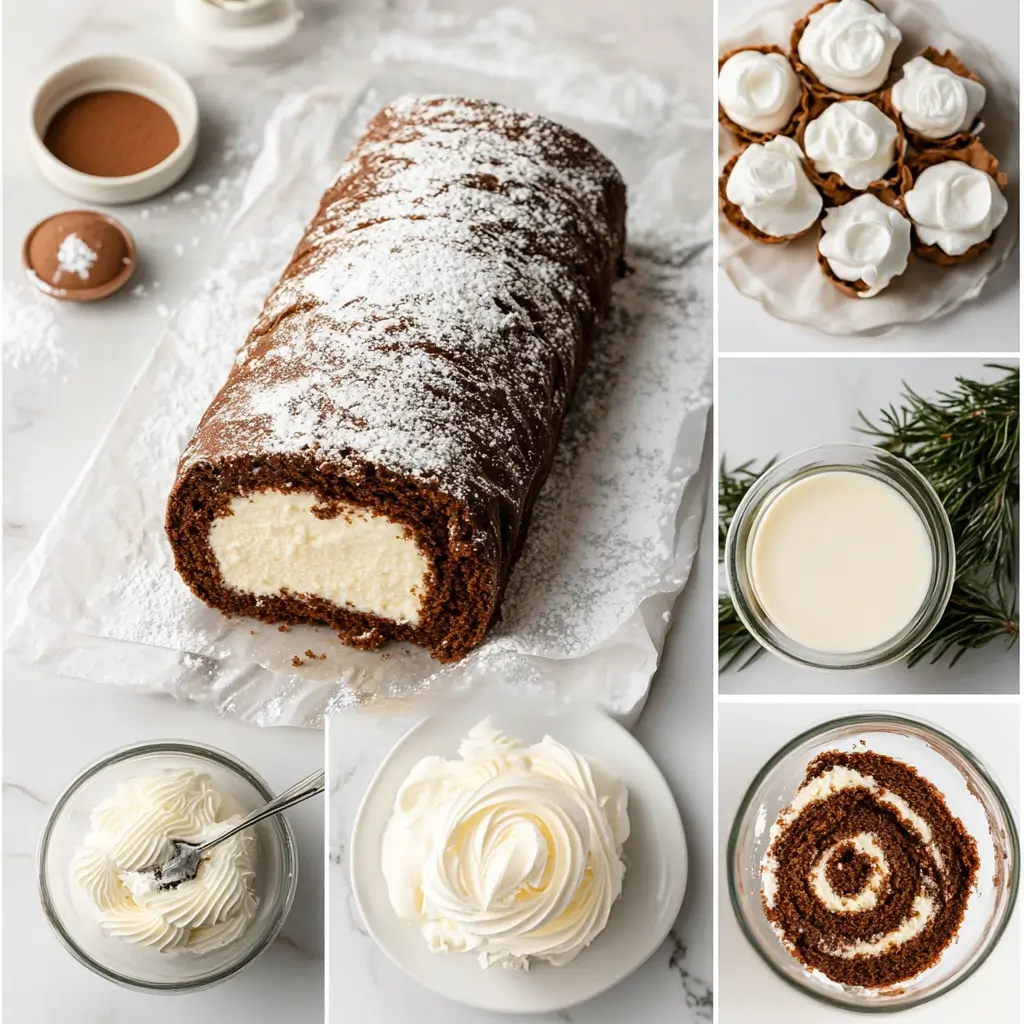Table of Contents
Introduction
As the holiday season approaches, the Yule log is a dessert that radiates festive charm. It’s that perfect mix of nostalgia, charm, and sweet indulgence. Whether you’re baking it for a family gathering or just want to wow your holiday guests, making a Yule log can feel like an art and a science. Don’t worry—I’ve got you covered with step-by-step instructions and tips to help you whip up a Yule log like a pro.
Let’s dive into the nitty-gritty of what makes this dessert so special and how you can master it at home.
A Dinner to Pair with Your Yule Log
Before indulging in this classic dessert, start your meal with a cozy and satisfying main course. Consider trying the Shrimp and Asparagus Scampi. This dish is quick to prepare, full of vibrant flavors, and light enough to leave room for dessert.
For more dinner inspiration, check out Genuine Spaghetti Bolognese Recipe, which pairs beautifully with festive desserts like the Yule log.
What Is a Traditional Yule Log Made Of?
A Yule log, also called bûche de Noël, is fundamentally a rolled sponge cake with a rich creamy filling, commonly flavored with chocolate, coffee, or vanilla. The cake is then frosted to look like a rustic tree log, often with chocolate ganache or buttercream. It’s usually decorated with powdered sugar (hello, snowy effect!), meringue mushrooms, holly leaves, and other festive touches.
Did you know? The tradition of the Yule log dates back to ancient winter solstice celebrations, where burning a log represented warmth and good luck.
For a deeper dive into festive culinary customs, check out Christmas Dessert Traditions Around the World to discover global holiday desserts that pair beautifully with the Yule log.
What’s the Difference Between a Yule Log and a Swiss Roll?
If you’ve ever had a Swiss roll (think Little Debbie cakes), you might be wondering, “Isn’t this just a fancy version of the same thing?” And you’re not entirely wrong. Both are rolled cakes, but the Yule log is like the elegant, decked-out cousin of the Swiss roll.
Key Differences:
- Flavor Profile: Swiss rolls are usually simpler, often filled with plain cream or jam, while Yule logs boast richer fillings like chocolate mousse or spiked buttercream.
- Decoration: A Swiss roll is typically coated with a thin layer of chocolate or sugar glaze. The Yule log? It gets a full-on holiday makeover, complete with intricate frosting and edible decorations.
- Occasion: Swiss rolls are everyday treats, while Yule logs are the show-stopping centerpiece of Christmas desserts.
How to Make a Real Yule Log?
Creating a Yule log might seem daunting, but it’s entirely achievable by following these steps. Let’s break it down into manageable parts.
Ingredients:
For the Sponge Cake:
- 4 large eggs
- ¾ cup granulated sugar
- ½ cup all-purpose flour
- ¼ cup cocoa powder
- 1 tsp baking powder
- A pinch of salt
The Filling:
- 1 cup heavy whipping cream
- 2 tbsp powdered sugar
- 1 tsp vanilla extract
For the Frosting:
- 1½ cups unsalted butter
- 3 cups powdered sugar
- ⅓ cup cocoa powder
- 2 tbsp milk
- 1 tsp vanilla extract
Optional Garnishes: Meringue mushrooms, a dusting of powdered sugar, and fresh rosemary sprigs.

Step-by-Step Instructions:
- Prepare the Sponge Cake
Preheat your oven to 350°F and line a jelly roll pan with parchment paper. Whisk the eggs and sugar together until the mixture is light and fluffy. Sift the dry ingredients (flour, cocoa powder, baking powder, and salt) and gently fold them into the egg mixture. Spread the batter evenly onto the pan and bake for 10–12 minutes.
For more baking inspiration, try our Chocolate Chip Apple Cookies as a fun side project.
- Roll the Cake While Warm
Here’s the trick: as soon as the cake comes out of the oven, turn it out onto a clean kitchen towel dusted with powdered sugar. Wrap it up in the towel and allow it to cool. This prevents cracks and gives the cake its classic rolled shape.
- Make the Filling
Whip the cream, powdered sugar, and vanilla extract until stiff peaks form. Carefully unroll the cooled cake, spread the filling evenly, and roll it back up.
- Frost the Cake
Beat the butter, powdered sugar, cocoa powder, milk, and vanilla until smooth. Frost the outside of the log, then use a fork to create bark-like lines.
- Decorate Like a Pro
Dust with powdered sugar for a snowy effect, add meringue mushrooms, and maybe even a little sprig of rosemary or cranberries for a pop of color. Ta-da—your Yule log is ready to steal the show!

How to Roll a Yule-Log?
This step can feel tricky, but it’s easier than it looks!
Tips for Rolling:
- Roll It While Warm: Rolling the cake while it’s warm and pliable is key. Use a towel dusted with powdered sugar to help guide the roll.
- Don’t Overfill: Spread the filling evenly, but don’t go overboard—too much can make the cake split.
- Go Slow: Take your time when rolling it back up after adding the filling. A steady hand works wonders here.
Can You Make a Yule Log the Day Before?
Absolutely! In fact, making it a day ahead can help the flavors meld together beautifully. Just be sure to store it in the fridge, covered to keep it from drying out. Allow it to reach room temperature before serving to achieve the ideal texture.
How Do You Roll a Swiss Roll Without Cracking It?
Cracking is every baker’s nightmare when it comes to rolled cakes, but it’s totally avoidable.
Here’s the Secret:
- Moist Sponge: A slightly underbaked cake is better than an overbaked one—it stays pliable.
- Roll It Early: Again, roll the cake as soon as it comes out of the oven. Waiting too long makes the cake stiff.
- Use a Damp Towel: The moisture in the towel helps prevent cracking as the cake cools.
How to Stop a Yule Log Cracking?
If cracks are still happening, don’t panic—the frosting is your best friend! Seriously, a thick layer of buttercream or ganache can cover a multitude of sins. To guarantee the cake stays extra moist and pliable, lightly brush it with simple syrup before adding the filling.
FAQs About Yule Logs
Q: Can I freeze a Yule log?
A: Yes! Securely wrap it in plastic wrap and store it in the freezer for up to a month. Allow it to thaw in the refrigerator overnight before serving.
Q: What’s the best way to transport a Yule log?
A: Place it on a sturdy cake board and secure it in a box. If you’re driving, keep it level in the trunk or backseat.
Q: Can I make a gluten-free Yule log?
A: Totally! Substitute the flour with a 1:1 gluten-free baking blend, and you’re good to go.
Q: Do I need a special pan to make a Yule log?
A: Nope! A standard jelly roll pan works perfectly.
Final Thoughts
Making a Yule log might take a little extra effort, but the result is so worth it. Not only is it a showstopper on your holiday table, but it’s also a sweet way to bring people together during the most festive time of the year. So grab your ingredients, crank up some holiday tunes, and get baking—you’ve got this!
If you try this recipe, let me know how it turned out (and whether anyone fought over the last piece). Happy holidays! 🎄

